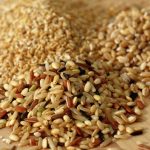
Doctors may be as confused about what dietary advice to pass on to their patients as the patients themselves — even when it comes to protecting against heart disease through diet, according to U.S., British and Italian reports. Part of the problem is the continuing lack of nutrition education offered in medical schools. Another is the lack of time doctors have to spend with patients. But one piece of information that is getting through is to eat less saturated fat and more unsaturated fat — a better replacement strategy than eating “low-fat” packaged foods that are actually very high in refined carbohydrates, such as sugar. But which unsaturated fats should you choose from? First, know that there are two main types: monounsaturated and polyunsaturated. Most foods high in unsaturated fats contain both, though some have more of one than the other. For instance, avocados, nuts and olive and canola oils are higher in monounsaturated fats. You may be familiar with polyunsaturated fats containing the omega-3 fatty acids eicosapentaenoic acid (EPA) and docosahexaenoic acid (DHA). You may have also heard about research disproving the heart-health effects of omega-3 supplements. However, the body still needs omega-3s for good health, and getting them directly from food, not capsules, is important. EPA and DHA are found primarily in fatty fish, so aim to eat 8 ounces of seafood a… read on >
















